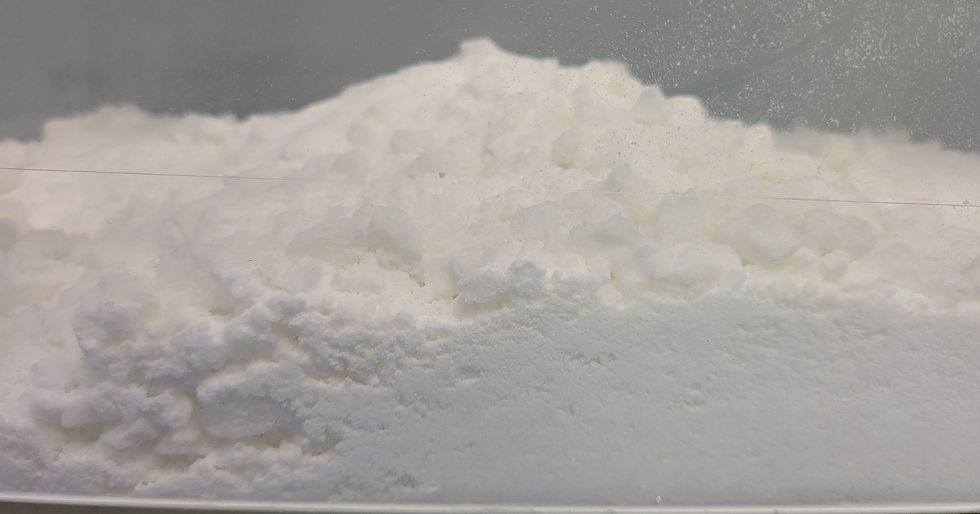Sodium Cocoate: A Gentle, Natural Surfactant for Modern Formulators
- biofm9
- 5 days ago
- 3 min read
Sodium cocoate is emerging as a go-to ingredient for formulators in the personal care and cosmetics industry. Derived from coconut oil, it offers a plant-based solution that is both effective and gentle. As consumers become increasingly aware of ingredient safety, regulatory concerns, and environmental impact, formulators must adapt by choosing ingredients that align with these values. Sodium cocoate stands out as a superior natural surfactant that not only cleanses effectively but also minimizes negative effects.
Understanding Sodium Cocoate
Sodium cocoate is a sodium salt of coconut fatty acids. It is created through the saponification process of coconut oil, where fatty acids are converted into soap. The result is a gentle surfactant that boasts cleansing properties while being biodegradable. This makes sodium cocoate not just a functional ingredient, but one that aligns with today’s demand for sustainable and naturally derived products.

In recent years, modern consumers have begun to favor formulas that are not only effective but also safe. Sodium cocoate fits this requirement perfectly offering a far gentler alternative to traditional surfactants like Sodium Lauryl Sulfate (SLS) and Sodium Laureth Sulfate (SLES).
Safety and Mildness Compared to SLS/SLES
One of the most significant advantages of sodium cocoate is its mildness. Unlike SLS and SLES, which can strip the skin of its natural oils and cause irritation, sodium cocoate maintains skin’s moisture levels. It is less likely to cause allergic reactions, making it an excellent choice for sensitive skin formulations.
Data suggests that SLS and SLES can lead to skin irritation in a substantial percentage of users, particularly with prolonged exposure. Sodium cocoate boasts a much lower comedogenic rating, meaning it is less likely to clog pores and cause acne. This makes it suitable for a wider range of cosmetic products, including cleansers, shampoos, and body washes.
Low Comedogenic Rating
For formulators, choosing ingredients based on their comedogenic ratings is crucial, especially for products aimed at consumers with acne-prone skin. Sodium cocoate scores well on this scale, offering more versatility in product formulation.
Sodium cocoate is suitable not only for facial care but also for a variety of body care products. Its ability to cleanse effectively without the heaviness associated with some surfactants makes it a valuable ingredient for light, foaming cleansers and shampoos.
Versatility in Formulations
Sodium cocoate's versatility is evident in its compatibility with various types of formulations. Whether used in creamy lotions, foamy cleansers, or gel-based products, it can be incorporated seamlessly. The ingredient can serve as both a surfactant and a thickener, allowing formulators to reduce the number of ingredients needed in their formulations.
This natural surfactant can be combined with other gentle ingredients like glycerin and aloe vera, enhancing the overall moisturizing benefits of a product. Such combinations ensure that skin remains hydrated while effectively cleansing away dirt and impurities.
Environmental Benefits and Biodegradability
Sodium cocoate presents a lower environmental impact compared to synthetic surfactants. Its natural origins mean that it is biodegradable, breaking down without causing any harm to ecosystems. As the beauty industry faces scrutiny over its ecological footprint, incorporating sustainable ingredients will become increasingly important.
Many consumers are demanding greener formulations, and sodium cocoate fits perfectly within this movement. Its environmental benefits position it favorably for brands aiming to market themselves as eco-friendly and sustainable. The use of this biodegradable surfactant aligns with company values focused on reducing plastic waste and promoting sustainability in product ingredients.

Compatibility with Other Ingredients
Sodium cocoate is not only effective but also highly compatible with other commonly used ingredients in personal care formulations. It blends well with a variety of botanical extracts, oils, and emollients. This compatibility makes it easier for formulators to experiment and innovate while maintaining product performance.
The surfactant can also be used in combination with preservatives, colorants, and fragrance oils without compromising efficacy or safety. Its versatility allows formulators to maintain a balance of cleansing power and skin-nourishing properties, essential for modern consumers.
Why You Should Consider Sodium Cocoate
As a formulator in the personal care and cosmetics industry, staying ahead of the curve requires a commitment to using safe and effective ingredients. Sodium cocoate represents a natural, sustainable alternative that meets the demands of today’s conscious consumers. Its safety and mildness compared to SLS/SLES, low comedogenic rating, and versatility in formulations make it an essential ingredient for future products.
Should you consider incorporating sodium cocoate into your formulations, get in touch with BioFuran Materials. We provide high-quality sodium cocoate and can supply samples to help you develop your next successful product.
By choosing sodium cocoate, you'll be aligning your formulations with modern market trends, demonstrating commitment to sustainability, and enhancing the consumer experience—all while ensuring safety and effectiveness.
To learn more about sodium cocoate and its benefits, visit our website or contact us directly to request your sample. Elevate your formulations with this gentle, natural surfactant today!








Comments